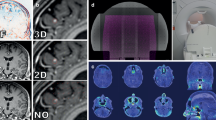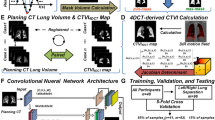Abstract
Background
Intensity-modulated radiotherapy (IMRT) techniques are now standard practice. IMRT or volumetric-modulated arc therapy (VMAT) allow treatment of the tumor while simultaneously sparing organs at risk. Nevertheless, treatment plan quality still depends on the physicist’s individual skills, experiences, and personal preferences. It would therefore be advantageous to automate the planning process. This possibility is offered by the Pinnacle3 treatment planning system (Philips Healthcare, Hamburg, Germany) via its scripting language or Auto-Planning (AP) module.
Materials and methods
AP module results were compared to in-house scripts and manually optimized treatment plans for standard head and neck cancer plans. Multiple treatment parameters were scored to judge plan quality (100 points = optimum plan). Patients were initially planned manually by different physicists and re-planned using scripts or AP.
Results and discussion
Script-based head and neck plans achieved a mean of 67.0 points and were, on average, superior to manually created (59.1 points) and AP plans (62.3 points). Moreover, they are characterized by reproducibility and lower standard deviation of treatment parameters. Even less experienced staff are able to create at least a good starting point for further optimization in a short time. However, for particular plans, experienced planners perform even better than scripts or AP. Experienced-user input is needed when setting up scripts or AP templates for the first time. Moreover, some minor drawbacks exist, such as the increase of monitor units (+35.5% for scripted plans).
Conclusion
On average, automatically created plans are superior to manually created treatment plans. For particular plans, experienced physicists were able to perform better than scripts or AP; thus, the benefit is greatest when time is short or staff inexperienced.
Zusammenfassung
Hintergrund
Intensitätsmodulierte Strahlentherapie (IMRT) hat sich als Standard durchgesetzt. Mit IMRT oder volumenmodulierter Arc-Therapie (VMAT) lassen sich Tumore behandeln und gleichzeitig die Risikoorgane schonen. Dennoch ist die Planungsqualität abhängig von individuellem Geschick, Erfahrung und persönlichen Vorlieben des Planers. Vorteilhaft wäre daher ein automatisierter Planungsprozess. Das Bestrahlungsplanungssystem Pinnacle3 (Philips Healthcare, Hamburg, Deutschland) ermöglicht dies mit einer internen Scripting-Funktion oder dem Auto-Planning-(AP-)Modul.
Material und Methoden
Die Ergebnisse des AP-Moduls wurden mit denen von intern erstellten Skripten und manuellen Bestrahlungsplänen verglichen. Um die Planqualität zu beurteilen, wurden mehrere Behandlungsparameter bewertet (optimaler Plan = 100 Punkte). Alle Patienten wurden initial von verschiedenen Physikern manuell und anschließend scriptbasiert oder mit AP erneut geplant.
Ergebnisse
Skriptbasierte HNO-Pläne erzielten im Mittel 67,0 Punkte und waren manuell geplanten (59,1 Punkte) und AP-Fällen (62,3 Punkte) im Durchschnitt überlegen. Zudem zeigten sie eine hohe Reproduzierbarkeit und damit einhergehend eine geringere Standardabweichung der Planparameter. Sogar weniger erfahrenem Personal ist es möglich, bei geringerem Zeitbedarf zumindest einen guten Ausgangspunkt für weitere Nachoptimierungen zu erzeugen. Erfahrene Planer schneiden allerdings bei einigen Plänen besser ab als Skript oder AP. Beim ersten Erstellen von Skripten oder AP-Templates sind Vorgaben von erfahrenen Nutzern nötig. Weiterer Nachteil ist z. B. ein Anstieg der Monitoreinheiten (Skript-Pläne +35,5%).
Schlussfolgerung
Insgesamt ist die automatische Planung der manuellen im Durchschnitt überlegen. Einzelne Pläne gelingen erfahrenem Personal besser als Skript oder AP. Der größte Nutzen besteht somit bei Zeitmangel und unerfahrenem Personal.



Similar content being viewed by others
References
Thieke C, Küfer KH, Monz M, Scherrer A, Alonso F, Oelfke U, Huber PE, Debus J, Bortfeld T (2007) A new concept for interactive radiotherapy planning with multicriteria optimization: first clinical evaluation. Radiother Oncol 85:292–298
Buschmann M, Seppenwoolde Y, Wiezorek T, Weibert K, Georg D (2016) Advanced optimization methods for whole pelvic and local prostate external beam therapy. Phys Med 32(3):465–473
Yang Y, Xing L (2004) Clinical knowledge-based inverse treatment planning. Phys Med Biol 49:5101–5117
Breedveld S, Storchi PRM, Voet PWJ, Heijmen BJM (2012) iCycle: Integrated, multicriterial beam angle, and profile optimization for generation of coplanar and noncoplanar IMRT plans. Med Phys 39:951
Quan EM, Chang JY, Liao Z, Xia T, Yuan Z, Liu H, Li X, Wages CA, Mohan R, Zhang X (2012) Automated VMAT treatment planning for stage III lung cancer: How does it compare with IMRT? Int J Radiat Oncol Biol Phys 84:e69–e76
Wu B, Pang D, Simari P, Taylor R, Sanguineti G, McNutt T (2013) Using overlap volume histogram and IMRT plan data to guide and automate VMAT planning: a head-and-neck case study. Med Phys 40:021714
Geoghegan S (2007) Scripting on the Pinnacle3 treatment planning system. http://medphysfiles.com/index.php?name=Downloads&get=36. Accessed 27 June 2016
Xhaferllari I, Wong E, Bzdusek K, Lock M, Chen JZ (2013) Automated IMRT planning with regional optimization using planning scripts. J Appl Clin Med Phys 14:176–191
ICRU (2010) Report 83: prescribing, recording, and reporting photon-beam intensity-modulated radiation therapy (IMRT). J ICRU 10(1):NP.3. doi:10.1093/jicru/ndq002
Riis B (2013) ICRU83 in Pinnacle. Presentation at the Pinnacle3 user meeting.
Marks LB, Yorke ED, Jackson A, Ten Haken RK, Constine LS, Eisbruch A, Bentzen SM, Nam J, Deasy JO (2010) Use of normal tissue complication probability models in the clinic. Int J Radiat Oncol Biol Phys 76:S10–S19
Wu B, Ricchetti F, Sanguineti G, Kazhdan M, Simari P, Chuang M, Taylor R, Jacques R, McNutt T (2009) Patient geometry-driven information retrieval for IMRT treatment plan quality control. Med Phys 36:5497–5505
Theunissen EAR, Bosma SCJ, Zuur CL, Spijker R, van der Baan S, Dreschler WA, de Boer JP, Balm AJM, Rasch CRN (2015) Sensorineural hearing loss in patients with head and neck cancer after chemoradiotherapy and radiotherapy: a systematic review of the literature. Head Neck 37:281–292
Haderlein M, Semrau S, Ott O, Speer S, Bohr C, Fietkau R (2014) Dose-dependent deterioration of swallowing function after induction chemotherapy and definitive chemoradiotherapy for laryngopharyngeal cancer. Strahlenther Onkol 190:192–198
Author information
Authors and Affiliations
Corresponding author
Ethics declarations
Conflict of interest
S. Speer, A. Klein, L. Kober, A. Weiss, I. Yohannes, and C. Bert declare that they have no competing interests.
Ethical standards
This article does not contain any studies with human participants or animals performed by any of the authors.
Rights and permissions
About this article
Cite this article
Speer, S., Klein, A., Kober, L. et al. Automation of radiation treatment planning. Strahlenther Onkol 193, 656–665 (2017). https://doi.org/10.1007/s00066-017-1150-9
Received:
Accepted:
Published:
Issue Date:
DOI: https://doi.org/10.1007/s00066-017-1150-9




